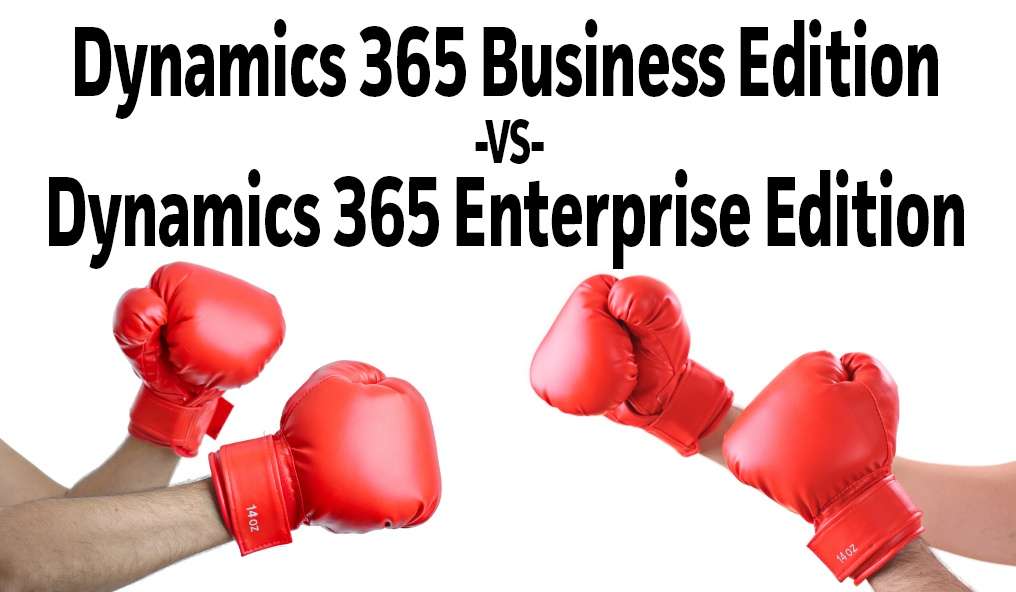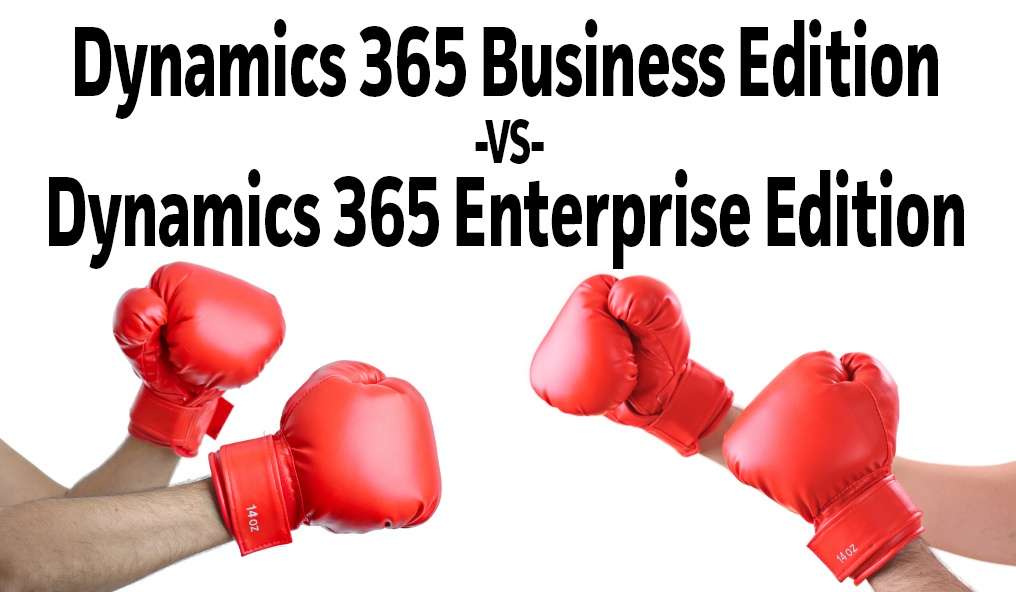05.12.17
 Dynamics 365 Business Edition VS Dynamics 365 Enterprise Edition">
Dynamics 365 Business Edition VS Dynamics 365 Enterprise Edition">

| App Name: | Plan Name: | Once Known As: |
| Dynamics 365 for Financials | Dynamics 365 Business Edition | NAV |
| Dynamics 365 for Operations | Dynamics 365 Enterprise Edition | AX |
The software must be purchased as a service in the cloud (for the most part). As the software is hosted in the cloud, the two options can be accessed from nearly any smart device letting you work from anywhere with WiFi. An additional benefit of being a cloud offering is that both software programs have a high degree of scalability without needing or scheduling an IT team. The changes in users happen with a few clicks*.
Dynamics 365 has a pleasing user interface which is based on earlier ERP systems. Dynamics 365 for Business Edition is based on Dynamics NAV, and Dynamics 365 for Operations and Finance is based on Dynamics AX. The new releases of both ERP packages have been described as a technology release in that the functionality of the ERP will not have changed much, just the platform and its interoperability. What’s more, the applications can filter out huge data sets into easy-to-consume views with Power BI. This means that you can easily access grouped or individualized sets of data.
If you are considering ERP software, it is important to distinguish between two of the bestselling solutions as the software is designed for two different business audiences, and more than likely one of the two business applications will fit your business’s needs.
Speaking simplistically, the easiest way of differentiating Dynamics 365 for Enterprise Edition (aka Dynamics AX + CRM) from Dynamics 365 for Business Edition (aka the new NAV + CRM) is establishing the audience for which they are designed.
Dynamics 365 for Business Edition (NAV)
Dynamics 365 for Business Edition can be purchased as an individual app or as a part of Dynamics 365 Business Edition, which comprises SMB focused sales, service, and marketing applications. It also comes at a lower cost and targets companies that have between 10 to 250 employees.
Dynamics 365 for Finance also contains fewer modules, or a little less functionality than the Enterprise Edition of Dynamics 365. (If your company will ever need Project Services or Field Services, we recommend that your organization chooses Dynamics 365 for Enterprise Edition, as there is no transition plan yet between the two software packages.)
That being said the modules include:
Dynamics 365 for Enterprise Edition (AX + CRM)
Dynamics 365 for Operations can be purchased as an individual app or as a part of Dynamics 365 Enterprise Edition Suite. Your company should consider this software if your organization has more than 250 employees. This is because it is designed for firms that have complex ERP and financial needs alongside a need for extensive analytics and integrations.
The business process of using the software is more linear. When undertaking a simple productivity test, you will find the software requires less mouse-clicks, and fewer navigational windows are required, so more tasks can be accomplished. This makes the work of your staff less laborious.
The functionality of Dynamics 365 for Operations truly goes on and on. It doesn’t do your business laundry all by itself, but with IoT functionality, it can send alerts that the washer needs to be started. However, if your business has the functionality of robots, it certainly could do your laundry. Find out more by visiting our Dynamics 365 for Operations Page.
Dynamics 365 Business Edition offers you simple accounting functionality, including basic multi-company support. In addition, it has fewer security controls and multi-dimensional analysis. The finance software in Dynamics 365 Business Edition uses internal parameters and account schedules to generate financial statements. When using it, you may end up creating your financial reports in Excel. Dynamics 365 for Operations offers you a more flexible system of accounts, user set-ups, company set-up, and cost accounting. It also has the ability to support multiple firms with different or similar inter-company transactions, GL’s, and consolidation, while eliminating entries.
Dynamics 365 is based on light-user and full-user subscription models. You are advised to choose the first price model for your employees if they complete light tasks or consume less data. This may include updating your company’s HR records or time and expense entries. The light users monthly fee is $5.
Dynamics 365 Business Edition Pricing
When you choose Dynamics 365 Business Edition, you must pay a subscription fee of $40 per month for every user. As a note, though the software is less expensive than the enterprise edition, since the functionality is not as robust, your business might require add-on features. These implementations and monthly costs for the add-ons could end up being just as much as Dynamics 365 for Operations and Finance.
You will not be restricted to a minimum user count when you purchase Dynamics 365 Business Edition software; however, the software helps companies more if they have over 20 users. The limit on users has a threshold of 250 team members.
Dynamics 365 for Finance and Operations Pricing
Dynamics 365 for Operations and Finance has a more intricate pricing model. The individual app can be purchased for in the cloud, in a hybrid application, or for on-premise. As of May 2017, the pricing starts at $190 per named user per month. The Enterprise Edition gives your company CRM plus ERP and starts at $210 per month.
For team members who need read access only and lite access, the price is $8 per month, not in addition to $190 or $210. It includes limited use of:
Come back to our blog in the future to learn what conditions apply for team member pricing.
If you want more information on Dynamics 365, whether Business Edition or Enterprise Edition and our services, we invite you to get in touch with our friendly advisers at Clients First Business Solutions.
Email: Minneapolis/St. Paul, Minnesota, or call at 877.428.7205.
Email: Dallas/Fort Worth, Texas, or call at 800.331.8382.
*Changes in users affecting scalability is usually very simple, unless you are using Dynamics Business Edition, and need over 250 users.
Our team brings unmatched efficiency and value for a smooth implementation and beyond. Find out how we can help your business gain a competitive advantage in the marketplace.
Free Consultation